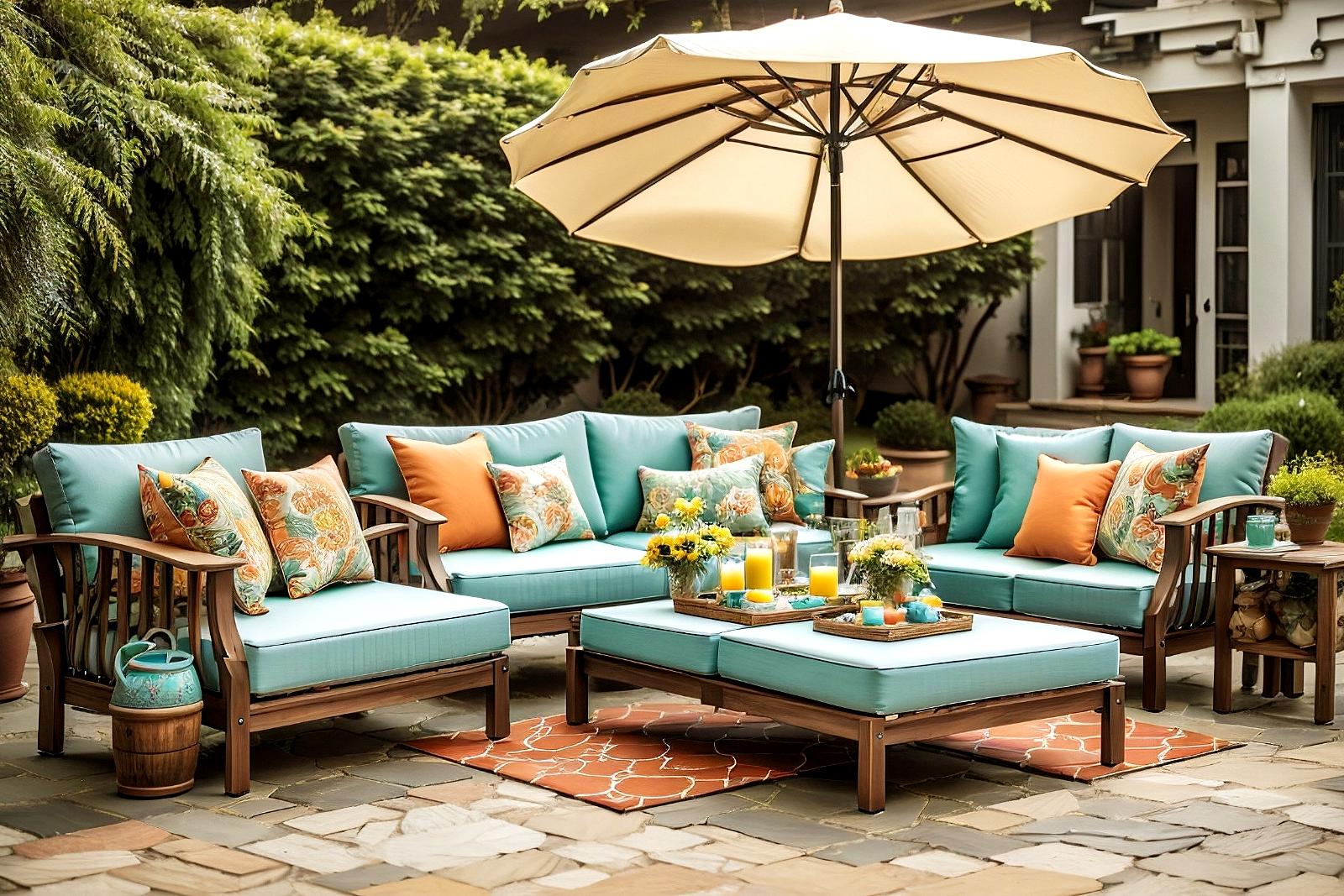What is the meaning of the furniture term Saracenic?
Answer: The term Saracenic refers to the architectural and design style that developed in the Islamic world during the medieval period. It is characterized by a fusion of various influences, including Arab, Persian, Byzantine, and other regional styles... read more
| Previous term: Sapele | Next term: Sash Bars |
Outdoor Patio Furniture Search
Outdoor patio furniture refers to the collection of furniture designed for outdoor use, specifically on patios, decks, or other outdoor living spaces. Discover practical tips, design ideas, and recommendations to make your patio the envy of the neighborhood. Expert tips and advice to help you find the ideal pieces to transform your outdoor space into a stylish and comfortable oasis.

Outdoor patio furniture refers to the collection of furniture designed for outdoor use, specifically on patios, decks, or other outdoor living spaces. Discover practical tips, design ideas, and recommendations to make your patio the envy of the neighborhood. Expert tips and advice to help you find the ideal pieces to transform your outdoor space into a stylish and comfortable oasis.

What is the meaning of the furniture term Saracenic?
Saracenic design elements can be seen in mosques, palaces, tombs, and other structures across the Middle East, North Africa, and parts of Europe. One of the primary influences on Saracenic design is the Islamic faith and its founder, Prophet Mohammed. Islamic religious beliefs, principles, and aesthetics greatly influenced the design choices made in this style.
Fine-scaled motives are a key characteristic of Saracenic design. Intricate patterns consisting of small elements are used to decorate surfaces. These motifs are often highly detailed, delicate, and precise, creating an overall sense of intricacy and richness in the design.
Abstract interlacings are another prominent feature of Saracenic design. Interweaving patterns and interlocking motifs are used to create a sense of depth and complexity. These abstract interlacings can be found in elements such as arches, windows, and decorative screens.
Geometric forms are widely employed in Saracenic design. Islamic mathematics and geometry hold significant importance, and it is reflected in the design choices. Intricate geometric patterns, such as stars, polygons, and tessellations, are used to create visually stunning and mathematically precise compositions.
Floral details are also prevalent in Saracenic design. Nature and its beauty are often celebrated in Islamic philosophy, and floral motifs are used to reflect this admiration. These motifs can range from stylized, abstract representations to more naturalistic depictions of plants and flowers.
Saracenic design encompasses a wide range of influences and elements. From fine-scaled motives to abstract interlacings, geometric forms, and floral details, these design choices create a unique aesthetic that reflects the cultural and religious context in which it originated.
Influence of Mohammedan design, with fine-scaled motives, abstract interlacings, geometric forms, floral details.
Saracenic design elements can be seen in mosques, palaces, tombs, and other structures across the Middle East, North Africa, and parts of Europe. One of the primary influences on Saracenic design is the Islamic faith and its founder, Prophet Mohammed. Islamic religious beliefs, principles, and aesthetics greatly influenced the design choices made in this style.
Fine-scaled motives are a key characteristic of Saracenic design. Intricate patterns consisting of small elements are used to decorate surfaces. These motifs are often highly detailed, delicate, and precise, creating an overall sense of intricacy and richness in the design.
Abstract interlacings are another prominent feature of Saracenic design. Interweaving patterns and interlocking motifs are used to create a sense of depth and complexity. These abstract interlacings can be found in elements such as arches, windows, and decorative screens.
Geometric forms are widely employed in Saracenic design. Islamic mathematics and geometry hold significant importance, and it is reflected in the design choices. Intricate geometric patterns, such as stars, polygons, and tessellations, are used to create visually stunning and mathematically precise compositions.
Floral details are also prevalent in Saracenic design. Nature and its beauty are often celebrated in Islamic philosophy, and floral motifs are used to reflect this admiration. These motifs can range from stylized, abstract representations to more naturalistic depictions of plants and flowers.
Saracenic design encompasses a wide range of influences and elements. From fine-scaled motives to abstract interlacings, geometric forms, and floral details, these design choices create a unique aesthetic that reflects the cultural and religious context in which it originated.
Influence of Mohammedan design, with fine-scaled motives, abstract interlacings, geometric forms, floral details.
Copyright 2026 - Furniture Glossary. All rights reserved.
